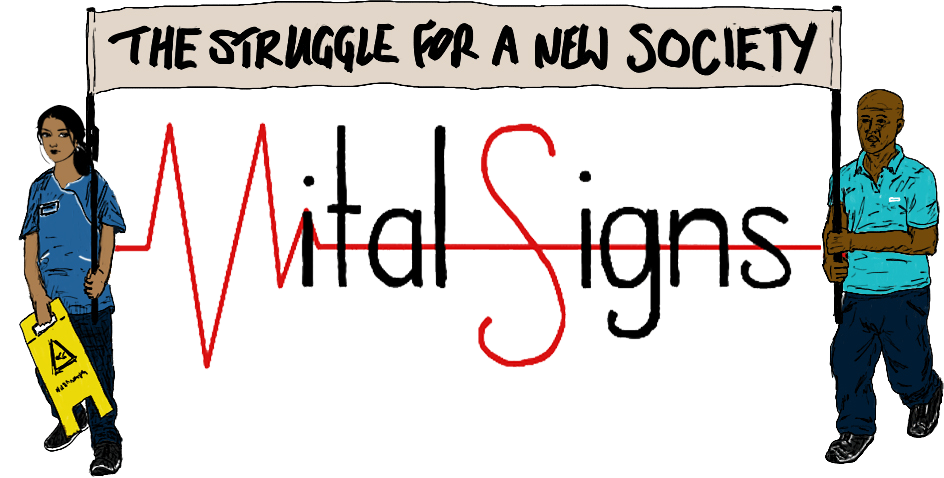On the 4th of July 2025, health workers and supporters met in Gloucester town centre to celebrate 100 days of strike. The 37 phlebotomists in the hospital want to pressure trust management to re-grade them from Band 2 to Band 3. Currently phlebotomists, who take blood samples from hospital and GP patients, earn 17p more than the minimum wage. At the BRI in Bristol, the trust used to offer vacancies for phlebotomists on bank – this means that the samples on which most medical diagnosis is based are gathered by minimum wage workers on zero-hour contracts.
The issue of re-banding workers is peculiar. There are national job profiles, which local trusts should use in order to write their job descriptions and band their workers. In the case of health care assistants (HCAs) the national job profile said that anyone who is doing medical tasks (taking blood pressure, performing blood sugar tests or taking blood samples) should be paid Band 3. Most trusts regraded their HCAs themselves, in other trusts the trade unions used the opportunity to stage strikes, which in the case of HCAs were often successful. Unison was able to present these disputes as victories, although the strikes just enforced what workers were entitled to anyway. In the long run, the trade union strategy to justify the fight for higher wages by referring to skill levels and job categories will only contribute to the deepening of divisions within the workforce – and thereby weaken everyone.
It seems that with the phlebotomists the union miscalculated slightly, which could explain the fact that the strike is dragging out that long. The work of phlebotomists is even more reduced to single tasks than the work of health care assistants. This means that it is easier for the trust to replace the striking workers by forcing nurses and health care assistants to perform more venepunctures for blood samples than they normally do. Over the course of the strike, the phlebotomists have been able to win over the lower level Band 4 supervisors who joined them in strike in the 5th to 6th week. This is an impressive, and necessary step. It can help us to question the function of managment in future: which of the tasks are necessary and which are only there to justify hierarchies and discipline workers.
Unfortunately there were no nurses or health care assistants at the strike rally and from short conversations with the phlebotomists, I gathered that there aren’t any strong links between striking workers and their nurses colleagues – not even with those nurses who are members of the same trade union. For the strike to hit home, the nurses and HCAs would have to refuse to do the extra work. This lack of practical solidarity between professional groups is a major problem, which undermines the strength of the strike.
This lack of strength cannot be compensated for by well-meaning speeches of leftists and trade union supporters, who promise that ‘the entire trade union movement’ is behind the strikers. What we need is more analysis of the strength and weaknesses of our struggles – and less trade union stage-shows of symbolic unity.




